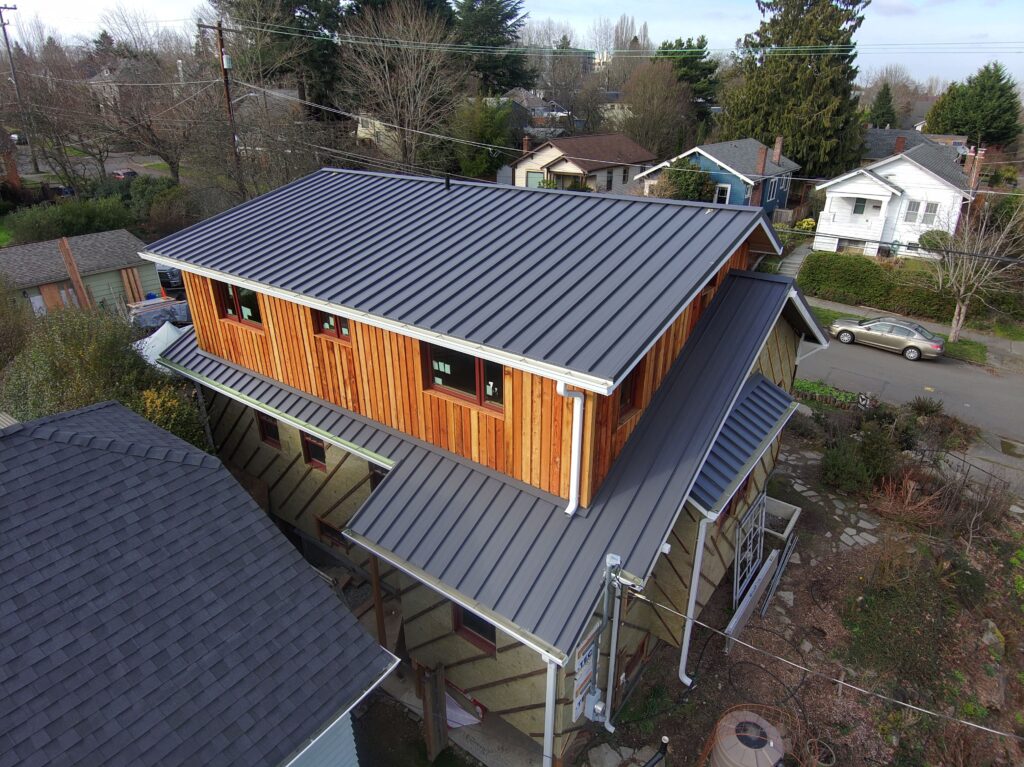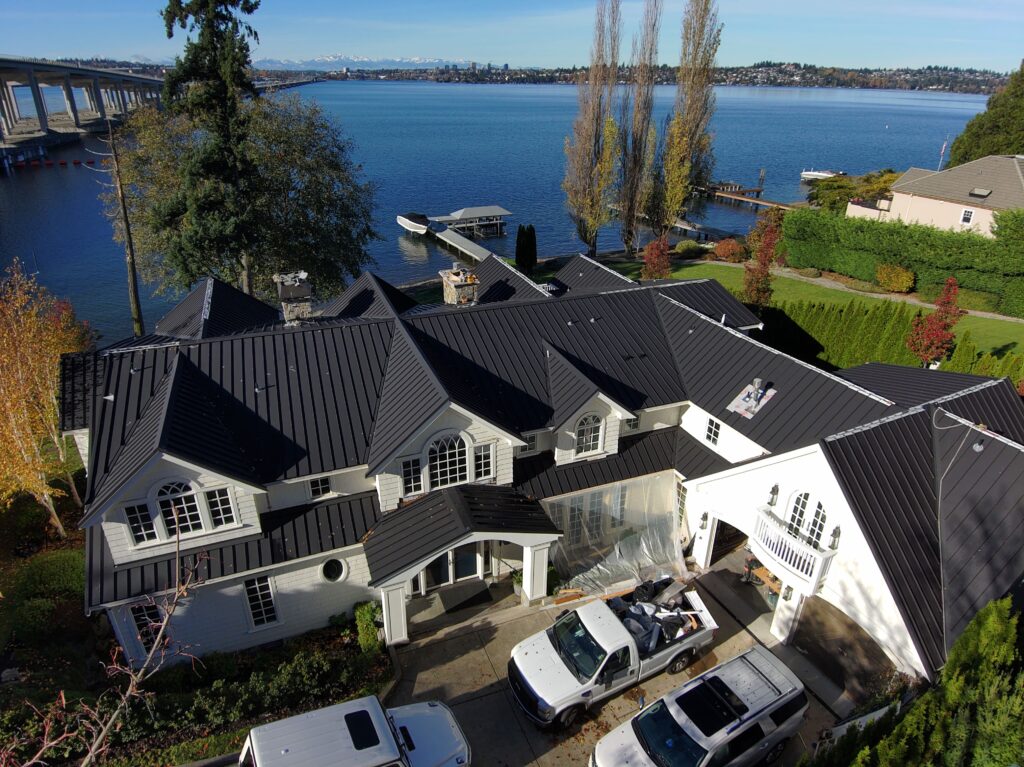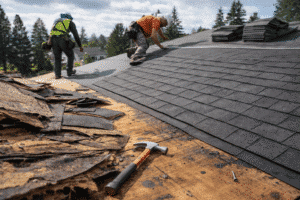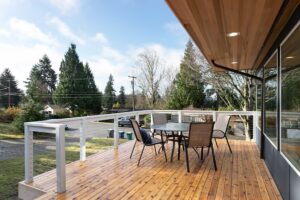When planning a roof replacement, many homeowners consider metal roofing as a long-term solution. Known for its strength and energy performance, it’s quickly becoming a go-to material across the Pacific Northwest. But is it right for your home?
In this guide, we’ll break down the metal roof pros and cons, highlight how it compares to shingles, and answer common questions about installation, cost, and maintenance.
For more details on your installation options, visit our Ultimate Guide to Roofing Installations.
Advantages of Metal Roofing
Exceptional Lifespan
One of the top advantages of metal roofing is its longevity. A properly installed metal roof can last 40–70 years—outlasting asphalt shingles by decades.
Energy Efficient Metal Roofing
Metal reflects solar radiation, reducing cooling costs by up to 25%. ENERGY STAR® rated products offer excellent performance for homes in warmer months, especially in sun-exposed areas.
Weather Resistance
From wind to rain and snow, metal roofs are highly resistant to the elements. They don’t rot, crack, or support moss growth—key benefits for homes in rainy climates like Washington.

Disadvantages of Metal Roofs to Consider
Higher Metal Roof Cost
While metal roof cost ranges from $8 to $14 per square foot installed, it requires a larger upfront investment than shingles. However, the longer lifespan often makes it a smart long-term choice.
Complex Installation
Poor installation is one of the most common metal roof installation mistakes. Improper flashing, gaps, or underlayment errors can reduce energy performance and lead to leaks. That’s why hiring skilled contractors is essential—review our installation guide here.
Appearance and Noise
Although modern metal roofing styles come in a variety of finishes, some homeowners still prefer the traditional look of shingles. Without proper insulation, metal roofs may also be noisier during rain or hail.
Metal Roof vs Shingles: Which Is Right for You?
Durability and Maintenance
Asphalt shingles generally last 15–30 years and require more maintenance, especially in humid climates. Metal roofs are virtually maintenance-free once installed.
Aesthetic Options
Shingles offer a familiar, textured appearance and come in many colors. Metal roofing offers sleek, modern lines and can mimic tile or shake depending on the product chosen.
Installation and ROI
Shingle roofs are faster to install and lower in cost. However, if you’re staying in your home long-term, the lifespan of a metal roof can offer better ROI over time.
Learn more in our article Metal Roof vs Shingles.
Final Thoughts on Metal Roof Pros and Cons
A metal roof can be an excellent investment in durability, performance, and aesthetics. But it’s not the best fit for every home or budget. Before you commit, weigh the metal roof pros and cons, evaluate your local climate, and consider your long-term plans.
For more on choosing the right roof type, visit Decoding Your Roof.
Thinking About Going Metal? Let Orca Help
Orca Roofing’s licensed experts are ready to walk you through every step—from choosing materials to professional installation. If you’re considering the switch to metal roofing, get a personalized consultation today.
Contact Orca Roofing for expert guidance on metal roof installation
Metal Roof Pros and Cons FAQs

How long does a metal roof last?
A professionally installed metal roof can last 40 to 70 years, depending on the type of metal, the local climate, and proper maintenance. This makes it one of the longest-lasting roofing materials available—far exceeding the 15–30 year lifespan of asphalt shingles.
Is metal roofing energy efficient?
Yes, metal roofing is energy efficient. It reflects solar radiation, helping to reduce cooling costs in the summer. Many metal roofing systems also qualify for ENERGY STAR® ratings and can be paired with reflective coatings to enhance thermal performance year-round.
Is a metal roof better than shingles for the Pacific Northwest?
In many cases, yes. The advantages of metal roofing—including its resistance to moss, rain, and wind—make it ideal for homes in the Puget Sound region. However, budget and aesthetic preferences still lead some homeowners to choose high-performance shingles.
What color metal roof is most energy efficient?
Lighter colors such as white, light gray, or beige tend to be the most energy-efficient metal roof colors because they reflect more sunlight. Reflective coatings can further enhance performance regardless of color.

